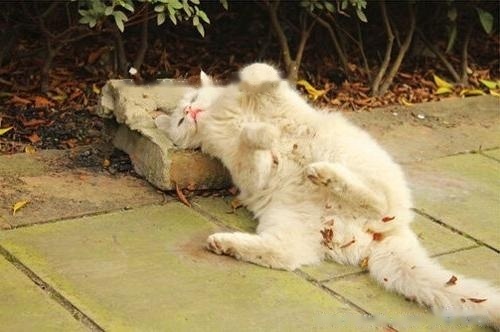What is the difference between baby cat food and adult cat food? Can kittens eat adult cat food? The adult cat commercial food sold on the market is basically acidified food . The so-called acidified food is the acidic urine after feeding the cat, that is, the urine pH value is 6-6.5. It is clinically found that adult cats, especially those aged 3-10 years, are most prone to urolithiasis with magnesium ammonium phosphate (struvite), which accounts for more than 90% of cat urinary calculi. Eating acidified foods to maintain urine pH 6-6.5 can effectively prevent the opening of magnesium ammonium phosphate urinary stones. Acidified food is the large application of animal protein in food, plus phosphoric acid and ammonium chloride. Animal protein is rich in sulfur-active acids, such as methionine, which can produce sulfuric acid in cats, which are then excreted in urine.

During the growing period, young cats have some special requirements for food. In addition to essential nutrients, they also need energy, as well as some substances that help their body organs grow. A young cat needs four times as much energy per kilogram of body weight as an adult cat. A young cat's whiskers eat more protein than an adult cat, and it needs to contain the amino acids it needs to grow. They also need the right amount of vitamins and minerals for healthy growth of teeth and bones. So young cats must eat a lot of food. And its stomach capacity is still relatively small, in order to meet the needs of nutrition, it is best to eat small meals. In order to meet the nutritional needs of rapidly growing young cats, the food fed should also meet the non-listed standards. The ideal food is one that is highly nutritious, so that puppy cat food gets the nutrients it needs in a small amount of food. The food should also be digestible to ensure that the nutrients in it are fully absorbed by the young cat. Obviously, the food should also be nutritionally balanced to meet the special needs of the kitten, and the food should be palatable so that the kitten will eat it. Designing a nutritionally balanced diet is a complex undertaking. Thankfully, feeding kittens is now less complicated. The expertise of nutritionists and veterinarians has developed kitten cat food that meets the special needs of young cats. This food is finely processed, delicious, and affordable, making it an ideal cat food.
Over-acidifying cat food with a pH below 6 can cause excessive loss of potassium and calcium in the urine, which is detrimental to the cat's health. Young cats mainly feed on milk, which can produce acidic urine in the body. If young cats are allowed to eat acidified food, it will hinder the healthy growth and development of young cats’ bones. This is why young cats cannot be fed commercial food for adult cats. one of the reasons. Pregnant and lactating female cats should not be fed acidified foods because acidified foods can interfere with the healthy development of the fetus or kitten. Elderly cats over ten years old are prone to form oxalate uroliths. Oxalate uroliths are formed in an acidic urine environment. Feeding acidified food will increase the risk of forming uroliths in old cats. Therefore, elderly cats should not be fed acidified food. In foreign countries, the number of oxalate urolithiasis in non-elderly cats has increased in recent years, which may be related to the popularization of acidified foods in adult cats, especially those foods with a urine pH lower than 6.

Subscribe to Newsletter
Professional platform for pets, dogs and cats.
![[Dog Training 5] The training method of pet dog dining etiquette](/static/img/12192/12192_1.jpg)




